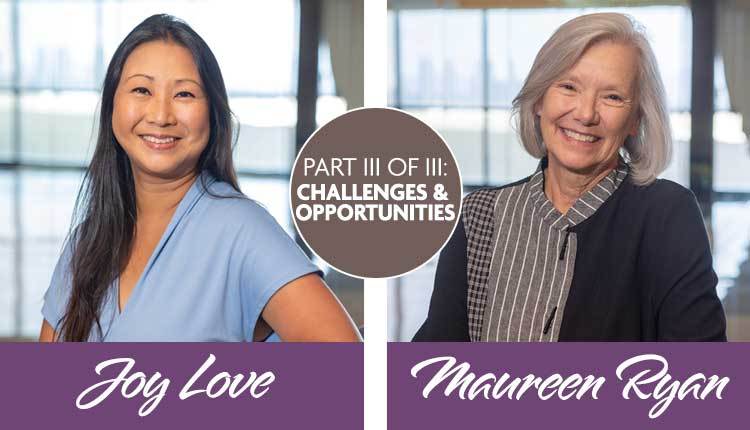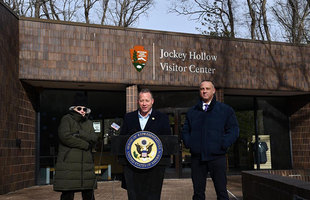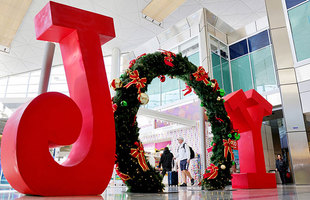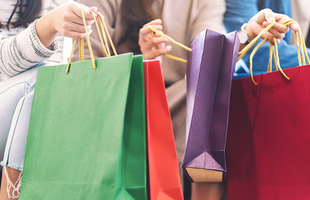Brick-and-mortar retailers are doing more and more to stay competitive in an era where online sales are soaring and competition is fierce. But there are many ways retailers can stand out with products and experiences that cannot be replaced with an online sale. While retailers at zoos and museums are fortunate to have a captive audience of attraction attendees, there is still more they can do to attract sales.
During the summer 2023 Las Vegas Market, Souvenirs, Gifts & Novelties Editorial Director Kristin Ely sat down with Joy Love, vice president of merchandising and warehouse operations, San Diego Zoo Wildlife Alliance and Maureen Ryan, museum store manager, Albuquerque Museum Foundation, to discuss the various operational aspects of managing a gift shop that supports an attraction.
In the third of this three-part series, Love and Ryan share some of the challenges and opportunities they face as brick-and-mortar retailers.
Kristin Ely (KE): What are some of your biggest challenges as a brick-and-mortar store?
Joy Love, San Diego Zoo Wildlife Alliance (JL): In general a brick-and-mortar store has the challenge of competing with the internet, competing with Amazon and online stores in general, and having access to purchase more easily than they ever have before. We do have a captive audience. We’ve got guests coming into the zoo and the safari park, and they want that souvenir to take home with them.
For us the biggest challenge is if someone wants something and they are a tourist and they don’t necessarily want to carry it or take it home, but we have the opportunity to ship it to them. We have an online store so we have an opportunity to circumvent that challenge.
Maureen Ryan, Albuquerque Museum Store (MR): We do not have a robust online store so our biggest challenge is what Joy was just talking about — if they want to take it home but don’t have room in their suitcase.
We bend over backwards to ship things out and make it very easy. A lot of times if people aren’t ready to purchase, we encourage them to take photos, and we can write down the artist’s name for them.
We can do all kinds of things to help them in the future if they do want to purchase so that is a challenge that we are slowly trying to overcome, we just aren’t ready to go the whole internet route.
Another fortunate thing that we have is the tours that come through the museum. That is another way we get an influx of potential retail.
KE: What effects did the pandemic have on your business and what if any effects still remain today?
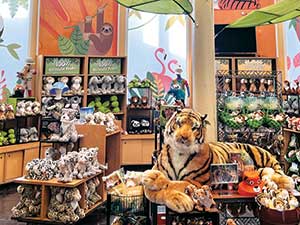
The San Diego Zoo Wildlife Alliance does its best to make shipping large items easy for travelers.
JL: It is going to sound cliché now, but initially it was supply chain issues. We all experienced it whether it was with us in the business or as a consumer. We were really seeing a delay and lag on some of the products that we need, but it is those relationships you have with your vendors and really working closely with them to secure the merchandise that they had and what we needed. And then it was the forward planning, working with them to place custom orders alongside what they are buying for their own in-house inventory.
Things have gotten a lot better in the last year so the lingering effects of that are that we are still seeing some quality issues for whatever reason, whether it be the supplier changed factories or manufacturers or there are new people working at those factories. I wouldn’t say it is happening all the time, but it is still an issue that we are seeing in some places.
MR: I don’t see that there are any lingering effects. I was very vocal when we were in lockdown. I said that the minute we can reopen, we are going to do it. In New Mexico, the governor was very cautious, and that was wonderful on her part. She opened up retail first before the museum was open.
How did we get customers in the door? If you recall the Burma-Shave sign, we did a Burma Shave on our lawn. Our marketing person came up with a little jingle, and I made these little Burma-Shave signs. We put them up on the sidewalk, and it was just adorable. People would be walking by and go, ‘“Wow it’s open.’”
We didn’t have a ton of business, but we were glad to be back. About three weeks later the museum opened and we had an excellent show. Business wasn’t fabulous but we did it, and I don’t feel any adverse effects at this point.
KE: What opportunities do you see as a brick-and-mortar retailer?
JL: We are fortunate that our guests that come into the zoo and the safari park are there to first have that world-class experience, and then more often than not they want to take home something to remember their stay by.
We see our brick-and-mortar stores — our retail shops — as a way to reiterate the conservation message that visitors have seen throughout the zoo and the safari park.
And then just piggybacking onto that guest experience, whether it be that they saw their favorite animal — a tiger or a koala, et cetera — and being able to take that home.
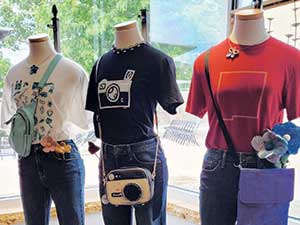
Eye-catching displays at Albuquerque Museum capture amphitheater attendees’ attention.
MR: We do a lot of pop-ups, or we have artists come in for a weekend trunk show — things like that to change things up and create some interest. If there are local authors or people we can get in from an exhibition to do a book signing or a talk, we’re involved with that along with the education side of the museum so we have those kinds of opportunities as well.
We have an amphitheater that is right off the store, and every summer we have Salsa Under the Stars on Friday nights and Jazz Under the Stars on Saturday nights. The store isn’t open but at least it gives people an eyeful as they are walking into the amphitheater because our windows are gorgeous. They can lust after things that they want to come back to purchase. There is also a coupon in the program for people who attend so they can come back and receive a discount in the store. Most of the people who come are locals and they will come back and say, “I was here for a concert last weekend, and I saw this in the window” so it really does help us in the long run.
We also have Route 66, and in 2026 it will be the 100th anniversary of Route 66. New Mexico is the only place where the road crosses itself and so we have that little bit of history, and Route 66 is literally a block away from us.
KE: Where is the future of your store headed?
JL: I think we will just continue to evolve and change product out as our guests vote for it as we see different animal trends, and I think we will continue to move in the direction of sustainability and eco-friendly merchandise.
MR: We are fortunate being at the museum, and we can capitalize on the experience of the exhibitions. That’s how we keep our merchandise fresh, and people can take home that wonderful souvenir of whatever it was that spoke to them when they were at the museum.
